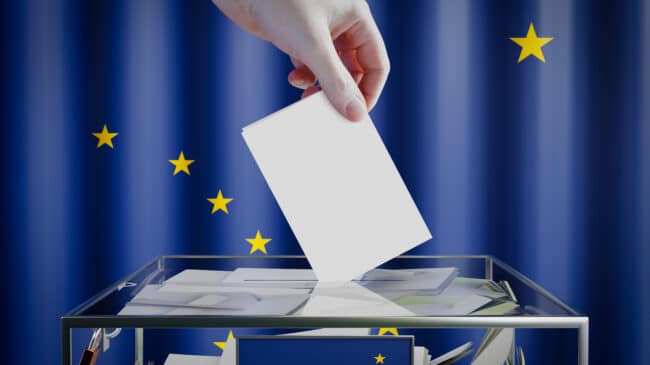Summary
Alaska Ballot Measure 2, the Repeal Top-Four Ranked-Choice Voting Initiative, on the November 2024 ballot would repeal a 2020 initiative approved by Alaska voters to adopt open primaries and a ranked-choice voting system. It would return Alaska to partisan primaries and a single-choice, plurality-wins vote system.
Alaska currently uses a top-four open primary system for state executive, legislative, and congressional elections. Under this system, all candidates––regardless of party affiliation––compete in a primary election to determine the top four candidates. Those candidates then proceed to the general election. The initiative to repeal top-four ranked-choice voting would reestablish Alaska’s prior system, where each party held separate primary elections, resulting in one nominee representing each party in the general election.
The initiative would also repeal rank-choice voting in the general election. Under rank-choice voting, voters rank their preferred candidates rather than selecting one candidate to receive their votes. If no candidate wins a majority of first-choice votes, the candidate with the least number of votes is eliminated. That candidate’s votes are then redistributed based on those voters’ second choices. This process is repeated until one candidate receives a majority. The repeal initiative would reestablish Alaska’s prior system where voters must choose one candidate, and the candidate who receives the most votes––but not necessarily a majority of votes––is the declared winner.
Fiscal Impact
The Alaska Repeal Top-Four Ranked-Choice Voting Initiative would likely have a fiscal impact, although the direction and magnitude are unclear. The official Statement of Cost produced by the Lieutenant Governor and the Division of Elections estimated a cost of $2.5 million for a public education campaign.
Proponents’ Arguments
Proponents of the initiative argue that Alaska’s top-four ranked-choice voting system is confusing, overly complicated, and undermines public trust in elections. As Trent England and Jason Snead, co-chairs of the Stop Ranked Choice Voting Coalition wrote in an opinion column for the Juneau Empire: “RCV creates new ways for voters to make mistakes and new questions about how to count ballots. At the same time, it makes elections overreliant on technology, reducing transparency and accountability.”
Proponents also cite the contested results from a 2022 special election for Alaska’s congressional district as evidence that Alaska’s top-four ranked-choice voting system is flawed. In that election, Mary Peltola (D) beat former Gov. Sarah Palin (R) and Nick Begich (R) in a three-way race. Begich was eliminated in the first round of vote tabulation because he received the fewest votes. Peltola won against Palin in the second round of vote tabulation after reallocating second-choice votes from voters who ranked Begich first. If Palin voters had instead ranked Begich as their first choice, he would have won in a one-to-one race against Peltola. In particular, critics point to 11,000 ballots that were disqualified in the second round because voters only indicated their top preference. Specifically, England and Snead argue that:
During the state’s special at-large congressional election, nearly 15,000 Alaskans had their ballots thrown out. This included more than 11,000 tossed because voters selected only one candidate without ranking any others. When that candidate was eliminated, their votes were eliminated as well.
Proponents of the repeal initiative argue that the ranked-choice system did not prevent the two Republican candidates from splitting the party’s vote, allowing Peltola to gain a majority. Palin, now a national spokesman for Alaskans for Honest Elections, has characterized ranked-choice voting as “the weirdest, most convoluted and most complicated voter suppression tool that Alaskans could have come up with.”
Opponents’ Arguments
Opponents of the repeal initiative generally argue that Alaska’s current top-four open primary system allows voters who are not members of a major political party to have a voice in taxpayer-funded elections. They suggest that open primaries require candidates to appeal to all voters, not just their own political party. Bryan Schroder, former U.S. attorney for the District of Alaska, has argued that:
Alaska’s ranked choice voting system is good public policy. It gives a voice to the majority of Alaskans who are not at either end of the political extremes. It also allows for better candidates, qualified individuals who can take thoughtful, moderated positions that would not have allowed them to survive a primary vote in the last few years, in either political party.
Opponents of the repeal initiative also argue that ranked-choice voting allows more opportunity for minor party candidates to compete. Chris Bye, a former Libertarian candidate for Alaska’s U.S. House district, argued that:
Party-induced fear prevents many voters from researching other candidates…If we are looking for the best representative, we should not be shackled into choosing the lesser of two evils; we must look beyond fear and the gatekeepers of the political parties. We should grasp the opportunity that the open primary and ranked-choice voting provide for a better governance future.
More generally, supporters of ranked-choice voting point to public polling that suggests the system is not confusing for voters. FairVote, an organization that advocates for ranked-choice voting, cited a 2022 poll of Alaska voters that found that “85% of Alaskans reported RCV to be ‘simple.’” FairVote also argued that voters who only rank their first choice may do so intentionally, not due to confusion. The same 2022 poll found that “[a] supermajority of voters (66%) ranked multiple candidates. Of the 33% of voters who only voted for one candidate, 75% reported the reason was ‘that was the only candidate I liked.’”
Discussion
While expanding voter choice and allowing non-partisan voters to play a more significant role in elections are laudable goals, it is not clear that open primaries and top-four election processes are a good means for achieving those goals. Political parties are fundamentally private organizations with the right to set their own rules for nominating candidates. To infringe on that right is to violate the freedom of association. No matter how large or powerful the two major parties may be, the government has no role in determining the process for their primary elections. That limitation does not prevent non-partisan voters from vocalizing their dissatisfaction with major-party nominees. Better alternatives for including non-partisan voters in the electoral process include allowing minor-party candidates to participate in debates and redrawing gerrymandered districts.
Ranked-choice voting, on the other hand, is an effective alternative to plurality vote systems for offering voters more choices. Because ranked-choice voting reduces the risk of spoiler effects, it allows voters to cast votes for minor party candidates without fear of “wasting their vote.” There is some evidence that minor party candidates experience more support under ranked-choice voting than under plurality vote systems.
However, ranked-choice voting––like any voting system––can produce suboptimal outcomes. One standard that mathematicians and political scientists use for evaluating voting systems is the “Condorcet winner criterion.” In voting systems that pass the Condorcet winner criterion, the winning candidate will always win in a one-on-one matchup against every other candidate. Neither ranked-choice voting nor Alaska’s current plurality vote system pass the Condorcet criterion, although data suggest that Condorcet winners are more likely under ranked-choice voting. According to FairVote, an organization that advocates for ranked-choice voting:
Of the nearly 500 single-winner RCV elections in the United States since 2004 in which we have sufficient ballot data to assess whether the Condorcet winner won the election, all but two were won by the Condorcet winner. The two elections that did not elect the Condorcet candidate are the 2009 mayoral election in Burlington, Vermont and the 2022 special election for U.S. House in Alaska.
Alaska’s 2022 special election was controversial because the Condorcet winner, Nick Begich, did not win. Competition for first-choice votes between Begich and Palin produced a “center-squeeze effect,” which can also occur under plurality voting systems. The particular circumstance of two Republicans running against one Democrat in the same general election was the product of Alaska’s top-four primary system, rather than ranked-choice voting.
While critics have raised concerns that ranked-choice voting may be confusing for voters, research indicates that “ranked ballots do not raise the probability that a voter would cast a void (uncountable) vote, despite raising the probability of at least one violation of voting instructions.” Critics have particularly cited concerns about ballots that are “discarded” because they only indicate a first-choice vote for a candidate that was eliminated in a prior round of tabulation. Failure to rank second or third-choice candidates may be due to confusion, but polling of Alaska voters suggests that voters often intentionally choose to just rank their top choice. On average, about 7.5% of ballots cast in ranked-choice elections fall into this category. By comparison, about 40% of voters drop off between the first and second rounds of traditional runoff elections. Moreover, there is evidence that ranked-choice voting can result in higher voter turnout and increased engagement with political campaigns.
In short, repealing Alaska’s top-four open primary system would restore the ability of political parties as private organizations to determine the methods for selecting party nominees. However, repealing ranked-choice voting and returning to a single-choice plurality wins vote system for general elections is unlikely to improve (and may even reduce) the representativeness of election outcomes.

